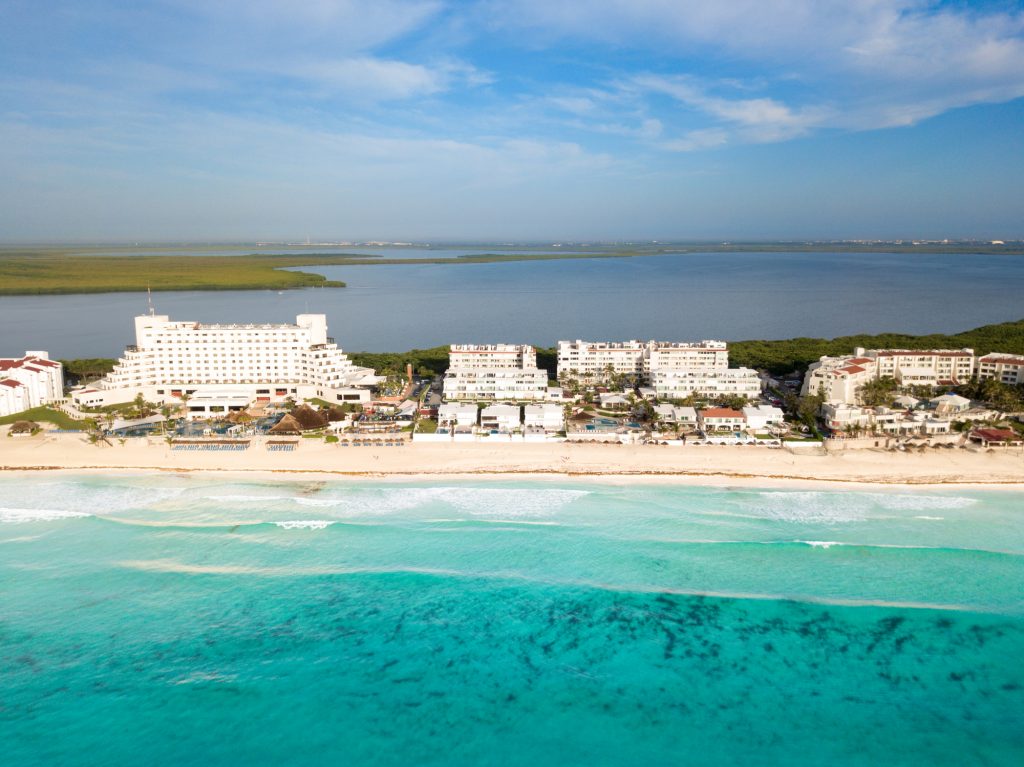An estimated 6.4 million tourists arrived in Cancun in 2019, a figure that hasn’t changed much in recent years, bringing 22.5 billion dollars yearly in tourism alone. This has dramatically benefited job creations with at least 1 in 10 jobs in the country coming from the tourism industry.
These numbers have had a favourable impact on the country’s economy as GDP growth has jumped from 0.4 to 1.3 and hotel occupancy rates in the Riviera Maya were at 69.6% at the end of the third quarter, forecasting strong growth in sight for 2020.
Mexican tourists account for 42% of the holidaymakers coming to the Riviera Maya and Cancun. In contrast, the remaining 58% are foreign, 55% of these are Americans, with Canadians and Europeans represent 11 and 12.6% respectively of the 36 million tourists who arrived in Mexico prepared to spend on average 1000 US dollars.
A clear example of the impact these figures had on the economy was noted in 2017 when tourism accounted for 8.7 of every 100 pesos produced by the national economy. Of these 100 pesos consumed within the country by tourism, 82.5 pesos corresponded to domestic visitors and the remaining 17.5 pesos to foreign visitors.
It’s important to note that the profile of the tourist visiting the beautiful beaches in Cancun and the Riviera Maya has changed over time Given that it’s a cosmopolitan region, this allows for accommodating different types of visitors: The predominant age group in Tulum is from 20 to 39 years old. These are people in search of ecotourism who are always on the lookout for sustainable places to visit. These travellers, mostly Mexicans and then Europeans, define themselves as adventurous, free and relaxed people and want to visit places like Bacalar and Mahahual.

In Cancun, the predominant age group was 30 to 39 years old with many repeat visitors and an incidence of more than 50%. Of the total number of tourists, at least 38.6% are from the United States, outnumbered by only 0.2 percentage points by Mexican tourists. Unlike other destinations which mainly attracted people travelling with their partner or friends, most holidaymakers come to Cancun on family vacations.
Despite a slight drop in numbers in 2018, tourism activity bounced back in 2019 with 36.5 million foreign tourists visiting between January and October in 2019, resulting in 2.9 million (+ 8.5%) more visitors than in the same period in 2018.
Cancun and the Riviera Maya have become the destinations of choice among domestic and foreign tourists over time thanks to their beautiful beaches and impressive archaeological ruins firm that continue to attract and surprise visitors who want to visit Chichén Itzá, Playa del Carmen, Xcaret, Cenotes, Tulum and Cozumel – all true Mexican jewels -, which make Quintana Roo the Mexican state that now receives more income through tourism.

We should also point out that the Riviera Maya itself starts 36km south of Cancun and finishes in Punta Allen, Quintana Roo. This area is rich in natural beauty with beaches, cliffs and cenotes on the coast and incomparable cultural wealth. For its part, Cancun is a growing city that has some of the most famous resorts and luxury stores where you can find the most exclusive brands in the world.
Because of this, the number of events held in this region is growing year after year. Clear examples of this are the well-known Riviera Jazz Festival and the critically-acclaimed Cirque du Soleil, which has established one of its most top shows in the heart of this tourist hub. Several world-class chefs have also left their mark on numerous events and places that showcase the very best of their cuisine, as is the case of Can Roca who brought El Celler to Cancun in 2018 for a charity event to help rebuild schools affected by the earthquake in Mexico City.
Cancun and the Riviera Maya undoubtedly have much to offer the world, which is why their continued growth isn’t showing any signs of stopping in the near future.







